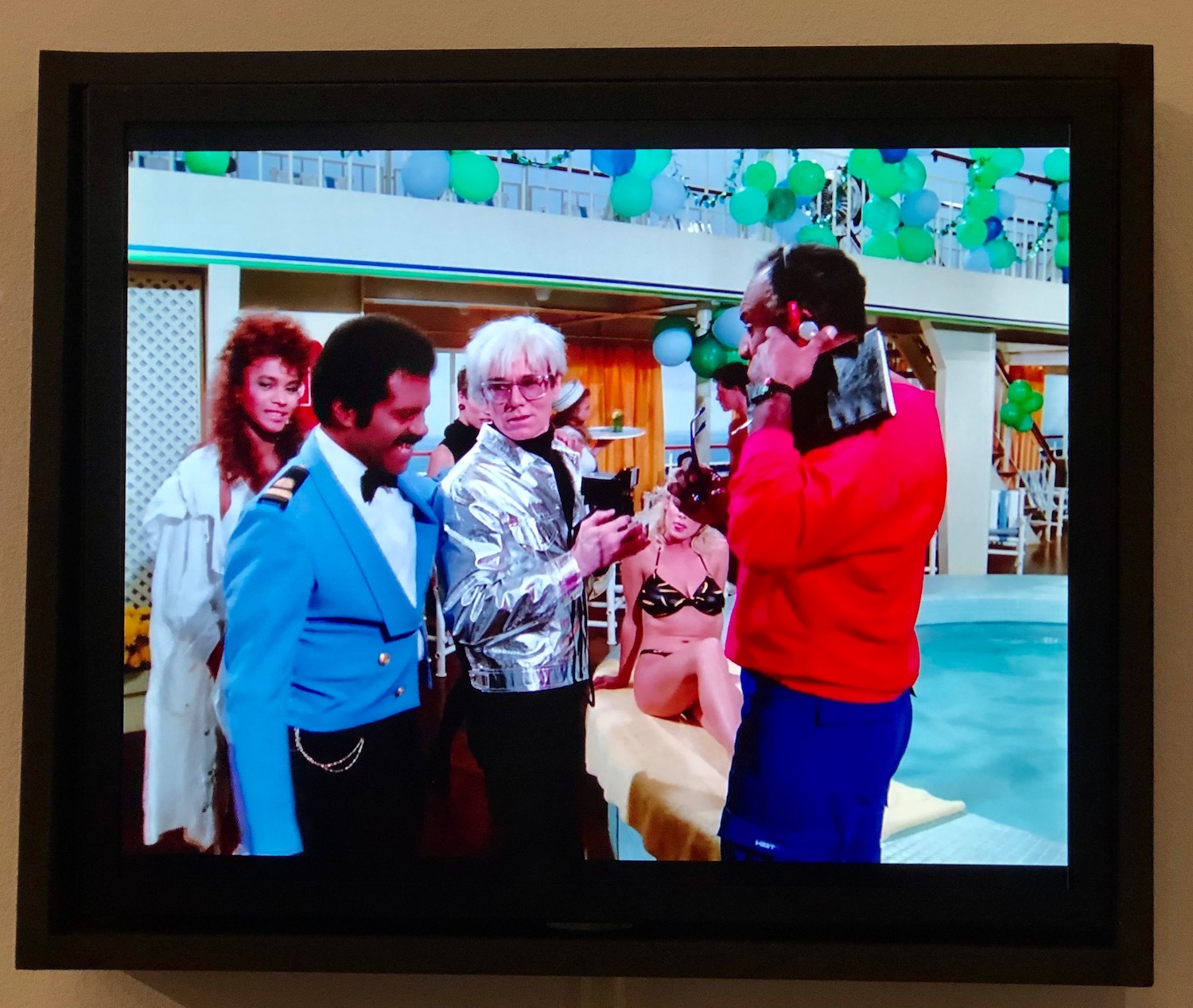It’s rare to encounter a Warhol exhibition with something genuinely new to say, but somehow Lifetimes (a co-production of Tate Modern, Museum Ludwig, Art Gallery of Ontario, and Aspen Art Museum — its only U.S. venue) accomplishes it. Thanks to both the thoughtful selection of key works and rare, germane ephemera from every stage and vector of the artist’s decades-long career, as well as the bespoke, site-responsive AAM exhibition design by artist Monica Majoli, audiences get evocative experiences along with an intimate re-education on the canon centering the artist’s biography and personal identity in the conversation.
Majoli described her approach to Andy Warhol as “both concept and a person,” and in this she succeeds, deftly weaving the range of everything we think we know into a deeper dive into his strong family ties, religious life, queer identity, restless curiosity, and prescient cultural critique. As the exhibition proceeds in a double thread of biographical chronology and episodic creativity, explicit connections are illuminated between what his life was like at key moments and the art which he produced at those times. Following a rather Proustian early-childhood period of illness, along through his lifelong closeness and artistic collaborations with his pious, part-muse mother, we see the early attempts to reconcile his working-class ethos with the modern obsession with celebrity shenanigans and the culture’s worshipful trade-in of god for glam.
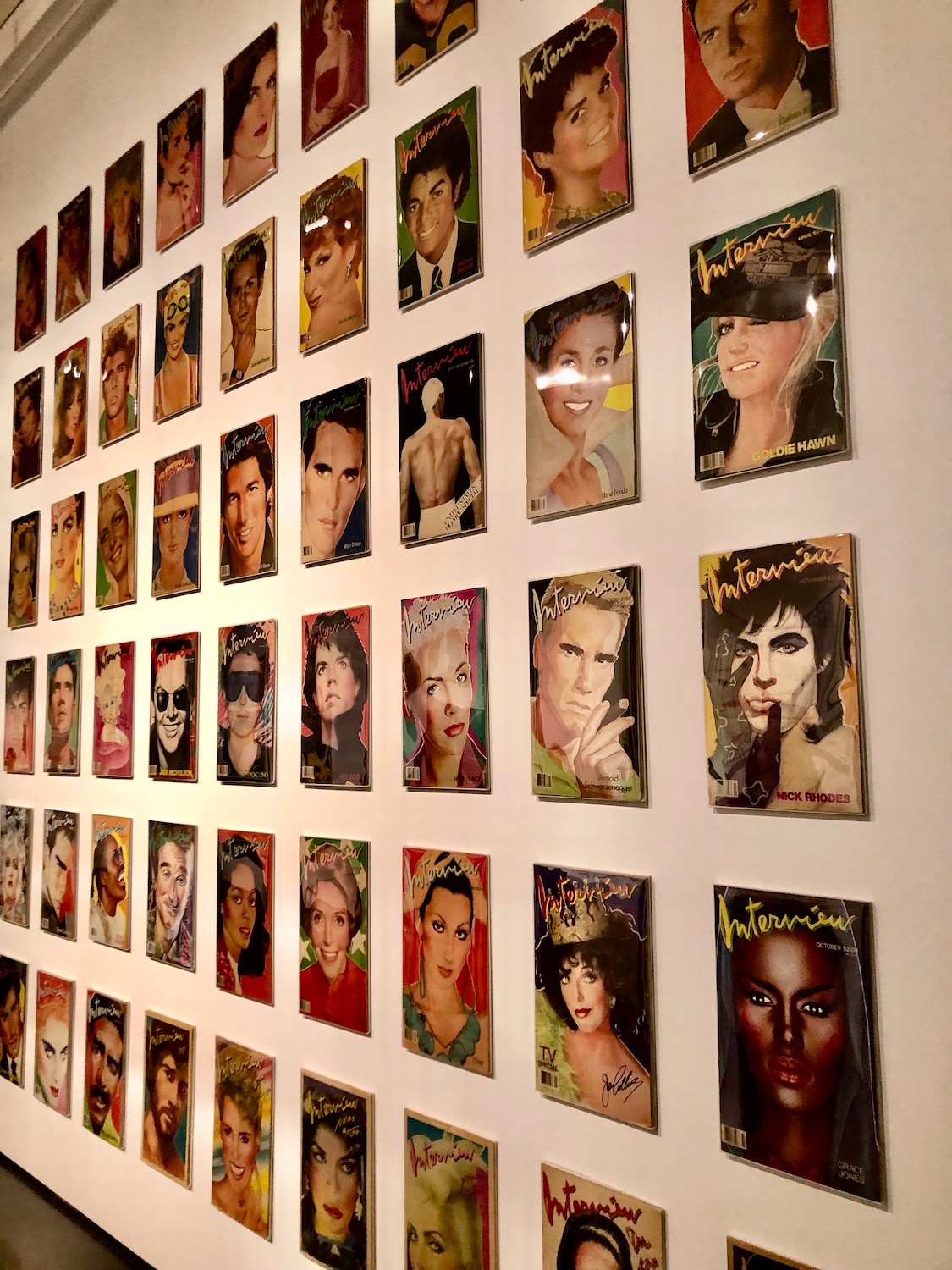
Installation view, Andy Warhol: Lifetimes at Aspen Art Museum
From his early life as a successful ad guy during literal Mad Men times, the show draws a straight line to later iterations of his career in which he gleefully leveraged his fame and personal brand into starring in lucrative commercial ads and even Love Boat guest spots, along the way founding of the avant-garde magazine Interview as a savvy, reverential vehicle promoting the same aesthetic that animated the paintings and films (not to mention to the epic situation with those polaroids) he was making. The post-New Wave, the expressionism-inflected explosion of gestural color, the eroticism of infinite variation, the fetish for style, the addiction to death- and doom-scrolling, and the emerging realization that every choice we make is art, as for better or worse has the power to make us special, maybe — all of this from 40 and 50 years ago will be familiar to anyone who is alive right now. But so too with his humanity, his searching, his doubts, his masks, his pranks, and his prayers.
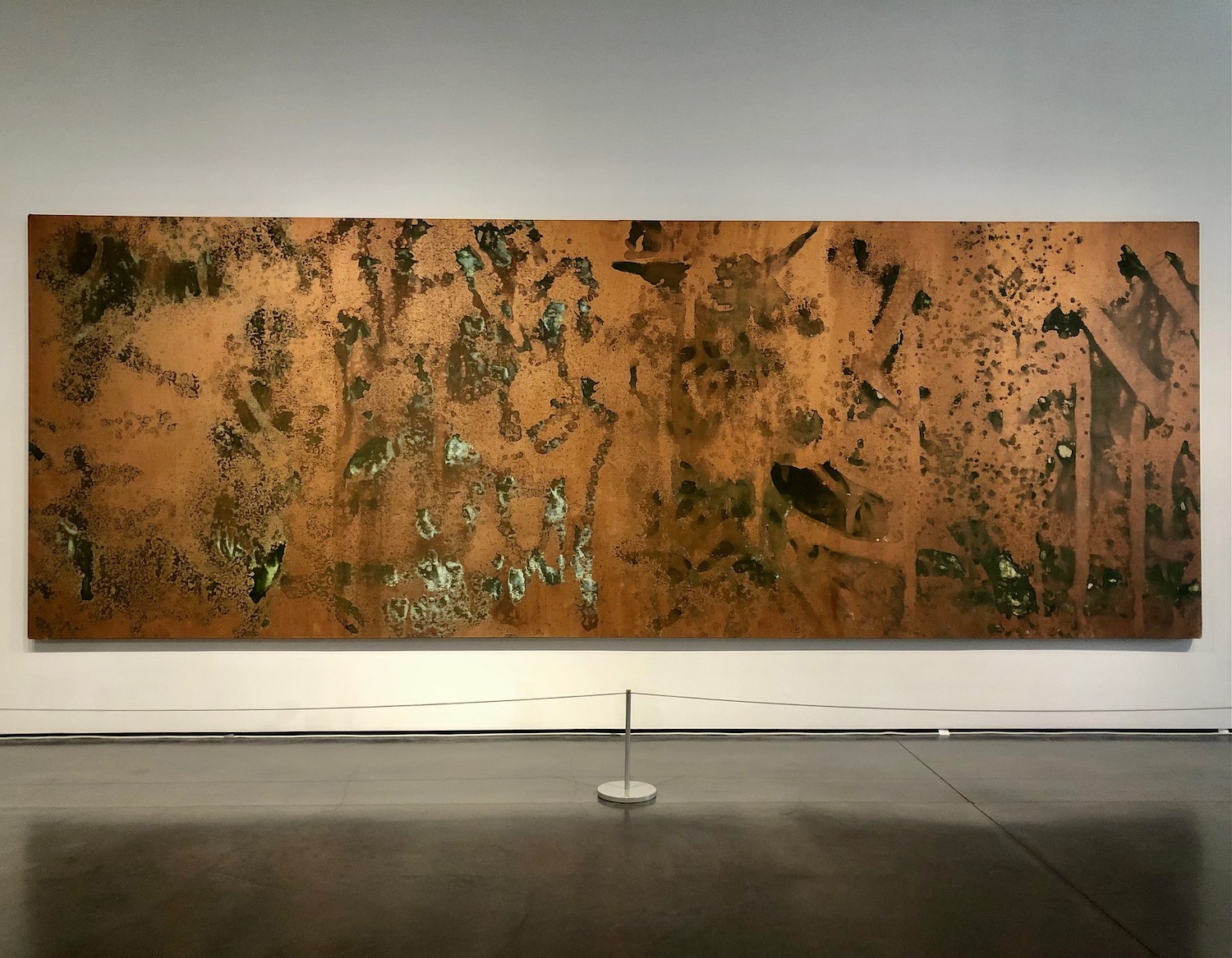
Oxidation Painting, 1978 on view in Andy Warhol: Lifetimes at Aspen Art Museum
A suite of galleries devoted to the role that his queerness played in Warhol’s personal life explicates the narrative through the lens of his choices of medium and subject, connecting sublimated political narratives with tender emotions, and continuing to inform layered understandings of the work. Both controversial and reserved, infused with illuminated relationships to art history and most importantly his own inner life, the choice to gather together these suites of frank but delicate male nude ink drawings from 1954-57 and 1977-78 with large Camouflage (1986) and Oxidation Painting (1978) canvases was inspired. It highlights the aspect of the former which overtakes a militarized pattern associated with masculinity and violence with a luscious queer palette and sparkle, and grounds the latter in the homoerotic physical, bodily process of achieving these chemical responses to AbEx — another machismo-dominated scene that needed queering.
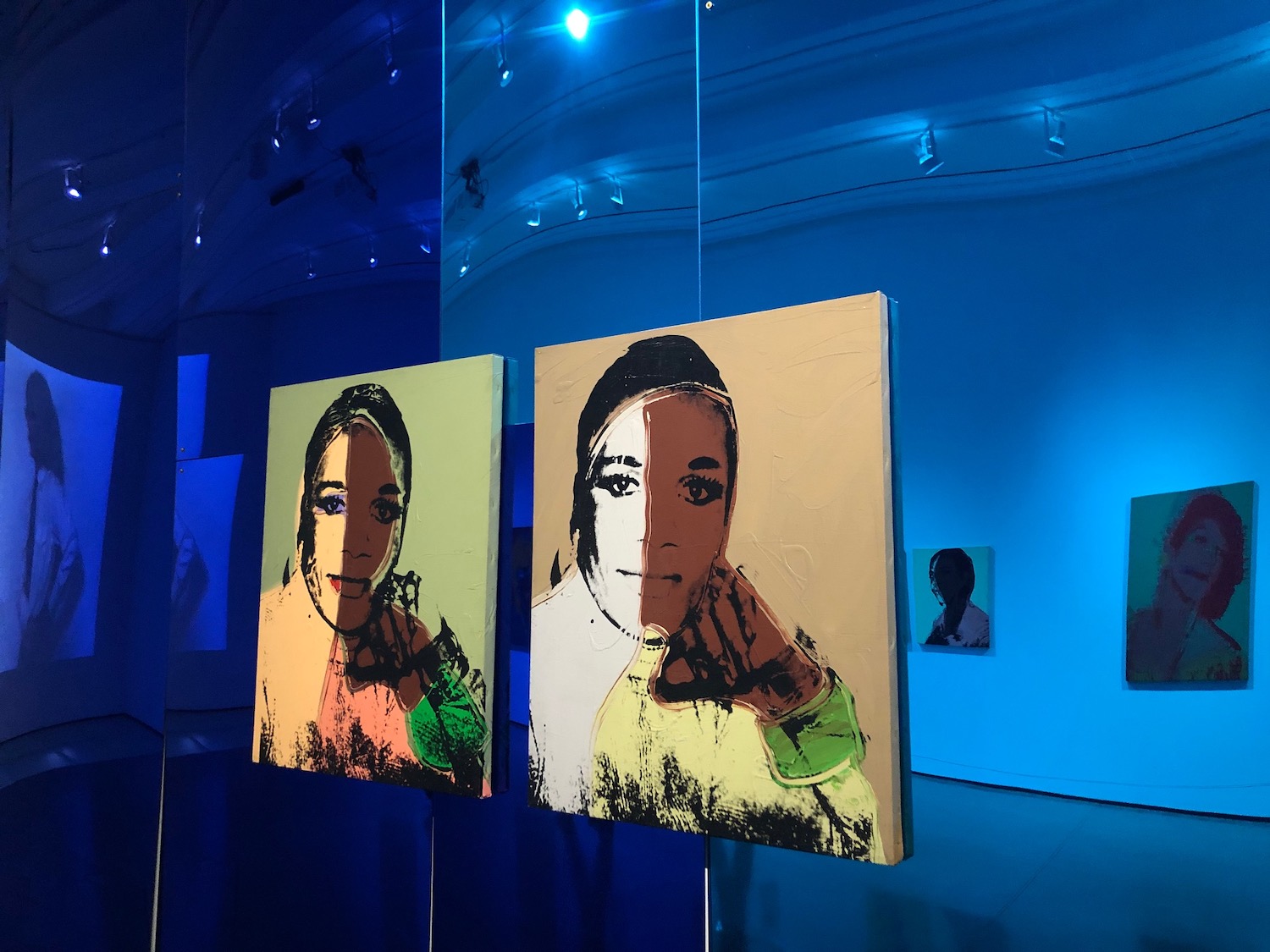
Ladies and Gentlemen, 1974 on view in Andy Warhol: Lifetimes at Aspen Art Museum
In the next room, the oft-cited Christopher Makos film Factory Diary: Andy in Drag 2 (1981) anchors a funhouse mirrored disco spaceship installation of the Ladies and Gentlemen (1974) series — portraits depicting trans folks of color, cast from bohemian theatre society and from the gay bar by the Factory. The room is both glorious and a little uncomfortable, but linking these to the film is salient, because on the one hand their juxtaposition signals a broader acceptance of gender-fluid identity, but on the other hand the portraits are themselves problematic, even exploitative. At first the infamously poorly-paid sitters were anonymous or at least unnamed publicly; subsequent scholarship revealed their identities. Questions remain, as this series can be seen as both immortalizing and erasing at the same time. The film both clarifies and complicates this equation, and in its own right serves flirtatious melancholy while evoking the years of similar films which Andy made of all who came through his doors.
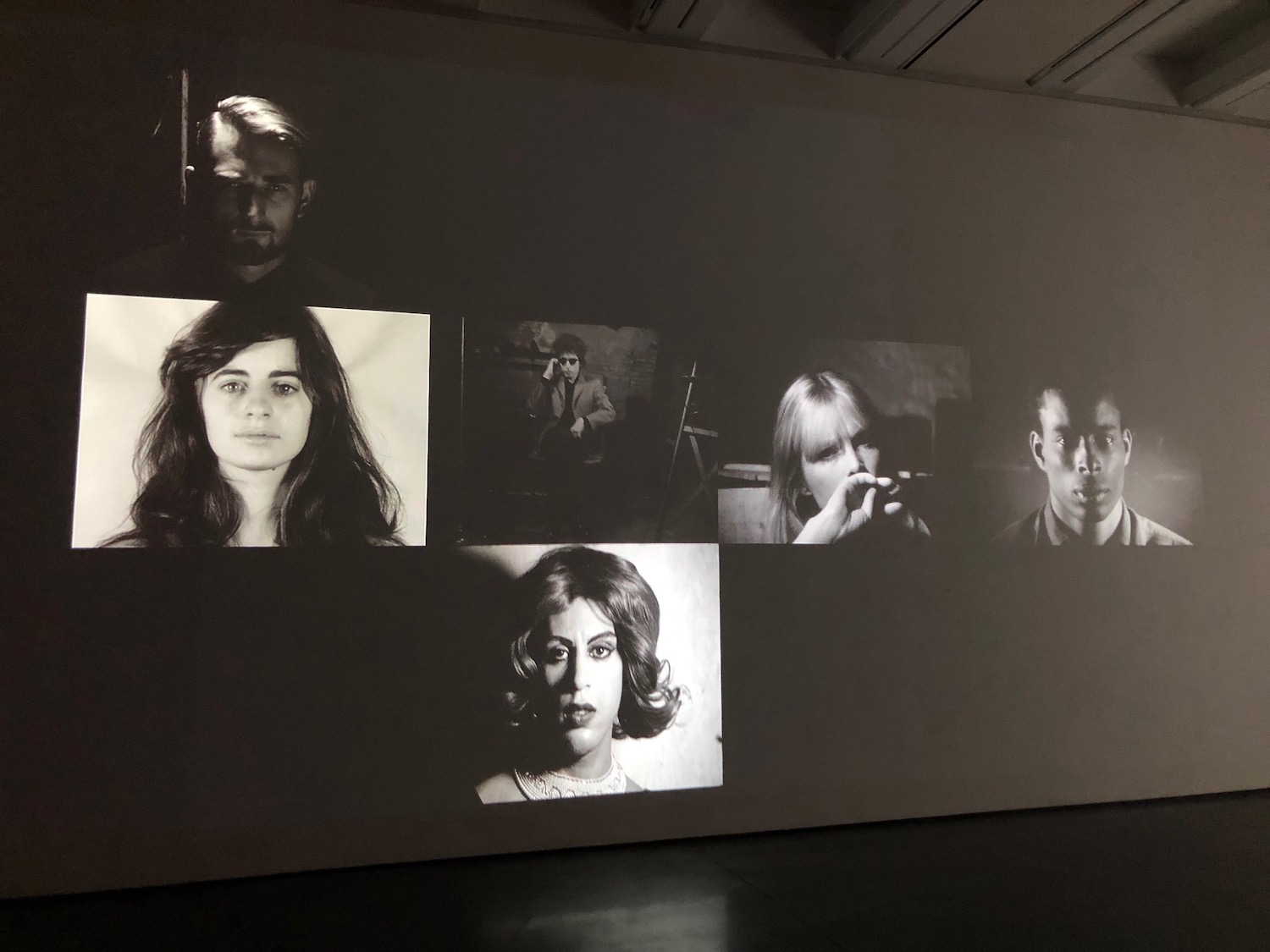
Screen Test videos, 1964-66 on view in Andy Warhol: Lifetimes at Aspen Art Museum
In the final set of galleries, several of the Screen Test videos (1964-66) flicker in a darkened room, hypnotic and lush; Duchamp, Hopper, Dylan, Nico, Ginsberg, and more just stare back at you with artificial but intense attention. It’s like a life flashing before the eyes of a dying man. These are projected across from a lesser-known and more final body of photo-based works with hand sewing, taking older photographs from 1976 and viscerally, visibly crafting new objects from them in 1986 — a year before his death and very much at the height of the AIDS crisis. This expression of remembering the past and giving it concrete form in a way that directly references a body in need of repair is a ritualistic act, a reach for permanence perhaps, or a look at beginnings as things everywhere were seeming to end.
Andy Warhol: Lifetimes
December 3, 2021 – March 27, 2022
All photos by Shana Nys Dambrot.

